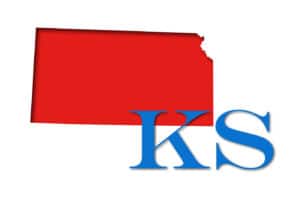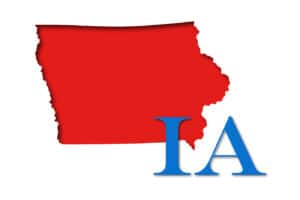Budget of the United States Government, Fiscal Year 2013 contains the Budget Message of the President, information on the President’s priorities, budget overviews organized by agency, and summary tables.
The FY-2013 Budget proposes spending $3.80 trillion in fiscal 2013, up from an estimated $3.79 trillion in fiscal 2012.
To download “Budget of the United States Government, Fiscal Year 2013” click here or visit: http://www.whitehouse.gov/omb/budget/Overview
The Federal Budget Process & Calendar
Early February: The President submits to Congress his proposed budget for the entire federal government for the coming fiscal year, which begins October 1. The budget includes proposed levels of spending and new budget authority for federal departments, agencies, and their programs; proposed outlays”; and proposed legislative or policy changes to direct spending programs or tax programs/laws. Budget authority is the dollar amount of new funds that Congress allows a federal agency to commit to spend for a specific program during the fiscal year. “Outlays” are the actual amount of federal expenditures for the program during the fiscal year.
Late Winter, Early Spring Hearings. Congressional committees and subcommittees, especially Appropriations panels, hold hearings on the Administration’s proposed budget for departments, agencies, and programs within their jurisdiction, usually taking testimony from and asking questions of Administration officials.
The Budget Resolution. Simultaneously, the House and Senate Budget Committees hold hearings and each craft a budget resolution — a blueprint that spells out specific dollar limits for the upcoming fiscal year for 19 broad federal spending categories (functions), and how much revenue the federal government is expected to collect over at least the next five years. The budget resolution can also make temporary or permanent changes to the rules for the budget process, such as requiring that any newly approved spending increases or tax expenditures be paid for by offsetting spending or tax cuts. Congress is supposed to pass the budget resolution by April 15, but frequently takes longer or doesn’t pass one at all.
302(a) and (b) Allocations. A report accompanying the budget resolution shows the dollar spending limit for each of the 19 budget function areas, and distributes these amounts — called 302(a) allocations — to the different Congressional committees with jurisdiction over the particular functions, programs, departments, and agencies. The Appropriations Committee gets a single 302(a) allocation, which it then subdivides into smaller 302(b) allocations that it provides to each of its 12 subcommittees.
Appropriations Bills. Working within the spending limits in the 302(b) allocation, and any other restrictions or requirements imposed by the budget resolution, each Appropriations subcommittee develops and approves a spending bill for the upcoming fiscal year setting out funding levels for each federal department, agency, program, and function under its jurisdiction, and reports the bill to the full Appropriations Committee. The Appropriations Committee “marks up” and approves the subcommittee’s bill, usually adopting amendments, and then forwards it to the full House of Representatives or Senate for a floor vote on passage. Once each chamber passes its version of the particular appropriations bill, a panel of appointed House and Senate “conferees” meet and hammer out a compromise final bill and conference report, which each chamber must pass in order to forward the bill to the president for his signature and enactment. There are usually 13 separate appropriations bills covering all parts of the federal government. Occasionally, two or more are bundled into one. While usually the House approves individual appropriations bills first and then sends them to the Senate to act on, this isn’t always the case and the reverse may occur or the two chambers may even simultaneously develop their own versions. Sometimes appropriations bills, in addition to setting out funding levels, also have attached “riders” that make substantive legislative amendments to particular federal programs and their rules.
October 1st Deadline. If any of the necessary appropriations bills have not been passed and signed into law by October 1st, Congress must pass and the president must sign a “continuing resolution” to continue funding for those parts of the federal government without an approved appropriations for the new fiscal year. These are usually short term, to give Congress additional time to complete passage of the remaining regular appropriations bill. Sometimes, however, Congress ultimately crafts a single consolidated or “omnibus” appropriations bill to provide funding through the end of the new fiscal year to all parts of the government for which a regular appropriations bill hasn’t yet been passed.
Key Terms
Appropriations: The process by which Congress provides budget authority, ideally through the enactment of 12 separate appropriations bills. In practice, appropriations bills are often combined into “omnibus” legislation.
Budget authority: Permission, provided by law, for federal agencies to spend or otherwise obligate money.
Budget outlays: Money that is actually spent in a given fiscal year, as opposed to money that is appropriated for that year. One year’s budget authority can result in outlays over several years, and the outlays in any given year result from a mix of budget authority from that year and prior years.
Discretionary spending: Spending for programs that Congress finances as it chooses through annual appropriations. About one-third of all federal spending falls into this category.
Fiscal 2013: The budget year that runs from Friday, Oct. 1, 2012, through Sunday, Sept. 30, 2013.
Mandatory spending: Spending mostly on entitlement programs, whose eligibility requirements are written into law. Mandatory spending accounts for about two-thirds of all federal spending.
Off-budget: An accounting convention that relates to spending and receipts for a few programs “” in particular, the Social Security trust funds and the Postal Service “” that are not counted for some specific budget calculations. Generally, however, most references are to the so-called unified budget that includes all programs.
Reconciliation: The process by which tax laws and spending programs are changed, or reconciled, to reach outlay and revenue targets set in the congressional budget resolution.
Rescission: The cancellation of previously appropriated budget authority “” a common way to save money that already has been appropriated.
Revenue: Income taxes paid by individuals and corporations, taxes on estates, excise taxes on tires and fuels, customs duties and some user fees account for most receipts collected by the federal government. Some receipts and user fees show up as “negative outlays,” however, and do not count as revenue.



